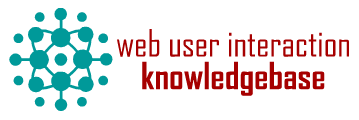Group
Component ID
Component name
Component type
Maintenance status
Development status
Component security advisory coverage
Downloads
Component created
Component changed
Component body
Group D8 is close to a full release! Please see: #2693167: [meta] D8 release roadmap. Drupal core 8.3.2 or higher required.
The Group module allows you to create arbitrary collections of your content and users on your site and grant access control permissions on those collections
Out of the box, Drupal only allows a person to view, create or edit the different content types you create. However, you might want to be able to let them view or edit all content types, but only in a specific section of the site.
Group also allows you to create communities. Users of the site can become members of a Group. You can then decide what membership of a Group entitles them to, such as access to content only available to members of that Group. There can also be different levels of membership to a Group so, for example, you can have administrative members who can create content and basic members who can only view content within the Group.
Some example uses:
- Classes on a school website. With a teacher as the administrator, students as the members and the content as the learning material. Articles in the Group are created by the teacher and only visible to the students in the Group. Forums created in the Group are safe places to discuss the class as they are only accessible to the teacher and the students.
- Multiple tier subscription content access. If you have several different collections of paid for content then you can charge for access to each Group you create. Buying access would grant you membership to one Group and be able to access its content.
- Sub-editors on a magazine site. Collecting content together in a Group allows you to manage that content as a sub site and assign its own administrator. This is useful where you might need someone to produce lots of different types of content but only want them to be able to add it to a specific area of the website.
- Sub-communities within a membership organisation. The topics a membership organisation may cover can be very broad and individual members may only be interested in seeing content from a sub-selection of the areas it covers. The sub-community may have their own executive members who can add blog posts or approve new members to their sub-community.
- Conference management. An organisation which manages conferences might have a Group for each conference. Members of a conference Group might be able to submit talk suggestions. Paying to attend the conference might grant them a higher level of access to the Group allowing them to see more content. Members of a group can also be given the ability to have their own profile within the Group which might collect details about them for the conference such as their meal preference.
What about Organic Groups?
This module is designed to be an alternative to Organic Groups (OG).
Organic Groups allows content itself to be groups, which isn't always what people want. It relies on an entity reference field to keep track of the ties between a group (node, term, ...) and its content (node, term, user, ...)
Groups instead creates groups as entities, making them fully fieldable, extensible and exportable. Every group can have users, roles and permissions attached to it. Groups can also act as a parent of any type of entity. Seeing as a group itself is also an entity, creating subgroups is very easy.
Further reading
There’s more information in this blog post.
Â
Sponsors
This project is sponsored by Deeson.
We’re growing our distributed team in the UK & Europe - talk to us.
Previous sponsors of this module are Tripal and AP University College (Antwerp, Belgium).
